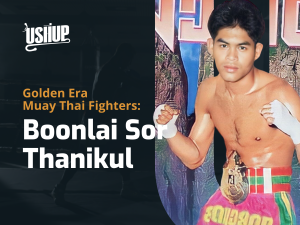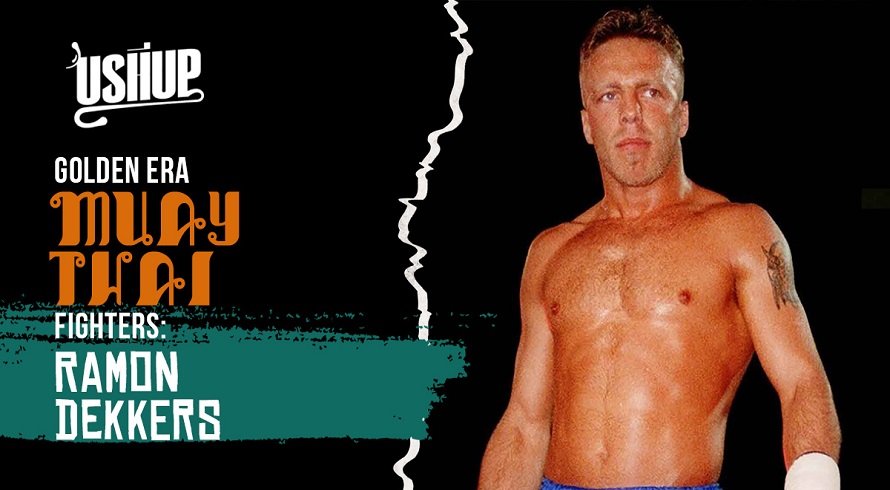
Most people would think that all the best Golden Era Muay Thai fighters all came from Thailand. After all, the Art of Eight Limbs has its historic roots in the country, and Nak Muays (Muay Thai practitioners) who grew up amidst this unique culture would naturally be the most gifted in the game.
However, that was not always the case. Ramon ‘The Diamond’ Dekkers would prove to be one of those few exceptions. He showed that by the 1990s, Muay Thai had indeed gone truly global, and even foreign fighters could achieve success in the highly competitive Thai fight arenas. Let’s find out more about this Golden Era legend.
Ramon Dekkers’ Childhood And Finding Muay Thai
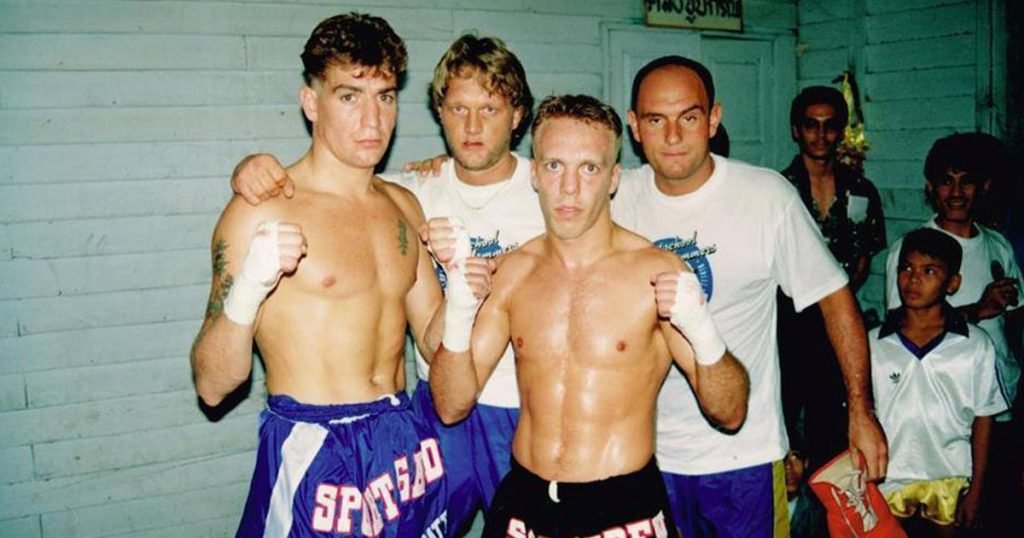
Dekkers was born in September 1969 in Breda, Netherlands. He started learning martial arts at the early age of 12 and began learning Judo. Kickboxing was already very popular in the Netherlands, with Muay Thai also on the rise. A few years later, Dekkers would begin his training under Dutch kickboxing and Muay Thai instructor Cornelius ‘Cor’ Hemmers of the Golden Glory gym. For more on the key differences between Muay Thai and kickboxing, read Muay Thai vs. Kickboxing.
Hemmers was a skilled Dutch kickboxer and Muay Thai fighter who had an impressive career instructing many mixed martial arts champions over the years. Hemmers would later become Ramon’s stepfather, and their close relationship would prove vital to the growth of Dekkers’ Muay Thai career. The young fighter would learn many of his winning combos under the tutelage of Hemmers.
Ramon Dekkers’ career would take off soon after a fight where he knocked out his opponent, a much more experienced and older fighter, in the early rounds. He quickly started to get a reputation in the local Muay Thai community for his skills and dispatched many of his opponents via knockout. His first big moment would come in 1987 when he became the MTBN Dutch Featherweight Champion. Dekkers won the fight against Kenneth Ramkisoen via knockout with a high kick in the second round. He was only 18 years old at the time.
Dekkers Enters The World Of Muay Thai
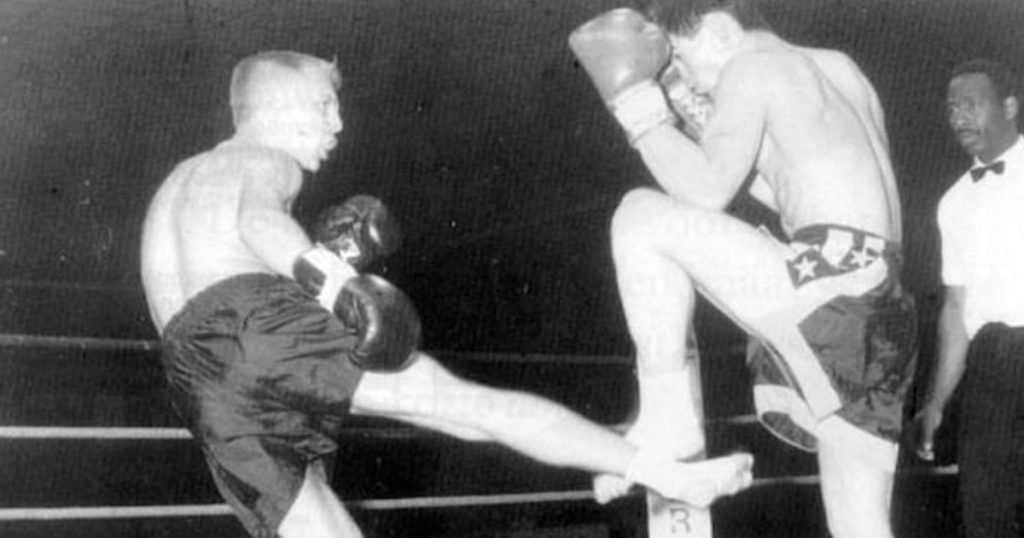
Ramon Dekkers’ Muay Thai career rose to new heights following his MTBN title win. He would go on to add multiple European and world championship titles to his growing record. He would become well known around the world for his aggressive fighting style and eventually come to the attention of the Muay Thai community in Thailand as an eight-time Muay Thai world champion.
Muay Thai At The World Stage
By the time he was 20, Ramon Dekkers had won a European Muay Thai Association (EMTA) title as well as the Dutch Kickboxing Association (NKBB) European title. The first would be a victory over French fighter Andre Richard-Nam, who had previously defeated Dekkers in 1987. When they fought again during their championship bout, Dekkers delivered some payback to Richard-Nam in the form of a knockout left hook.
After these victories, Ramon Dekkers would set his sights on winning the world championship titles. The first was the IMTA World Lightweight title. He defeated Thai fighter Mungkordun Sitchang to win it in 1989. His next fight against the reigning Lumpinee champion, Namphon Nongkeepahuyuth would finally get him noticed by Muay Thai fans in Thailand. Dekkers won by decision and claimed the IMF World Light Welterweight Championship title. This took the Thai people by surprise, as they did not expect the foreign fighter, whom they considered to be the underdog, to defeat their champion.
Dekkers would meet Namphon again in Thailand in a highly anticipated match. However, he would also beat another Lumpinee champion before leaving Amsterdam. Cherry Sor Wanich was knocked out by Dekkers with a left hook in the first round.
Ramon Dekkers The Muay Farang
The rematch against Namphon Nongkeepahuyuth took place at the Lumpinee stadium in 1990, and this time, Dekkers would not have the hometown advantage he had in Amsterdam. The match was close, but Dekkers would lose by decision, although some have felt that the Thai judging panel was biased in favor of their own fighter. In the same year, Ramon Dekkers would return again to Thailand to face off against Superlek Sorn E-Sarn. This was followed by a match with Issara Sakkreerin to contend for the Lumpinee Stadium Lightweight title. He lost both matches but hadn’t given up on winning over the Thai crowd yet.
The following year was a big one for Ramon Dekkers, and we would see his reputation in Thailand change to be more positive towards him. He met some of the country’s best Muay Thai champions like Sangtiennoi Sor Rungroj, Sombat Sor Thanikul, and Coban Lookchaomaesaitong. Although Coban battered Dekkers until the third fight in their gruesome five-round battle, Ramon powered up completely changing the results of the entire fight in the fourth and final fight, winning the battle like the Muay Thai powerhouse he is. While he only won two out of the five matches he competed in, he took the fight straight into the heart of Thailand, beating two of their top-tier best fighters.
In the eyes of the Thai fanbase, he was no longer just another Muay Farang (Foreign Nak Muay). Ramon Dekkers had become one of the most respected foreign Muay Thai fighters in Thailand and was known as the ‘Turbine from Hell’. He was also called ‘The Diamond’, implying that he was very polished in Muay Thai. Dekkers continued to return to Bangkok for more martial arts action over the years, and also struck up a rivalry against Coban Lookchaomaesaitong, which is one of the most famous from the Golden Era.
The ‘Turbine From Hell’ And His Fighting Style
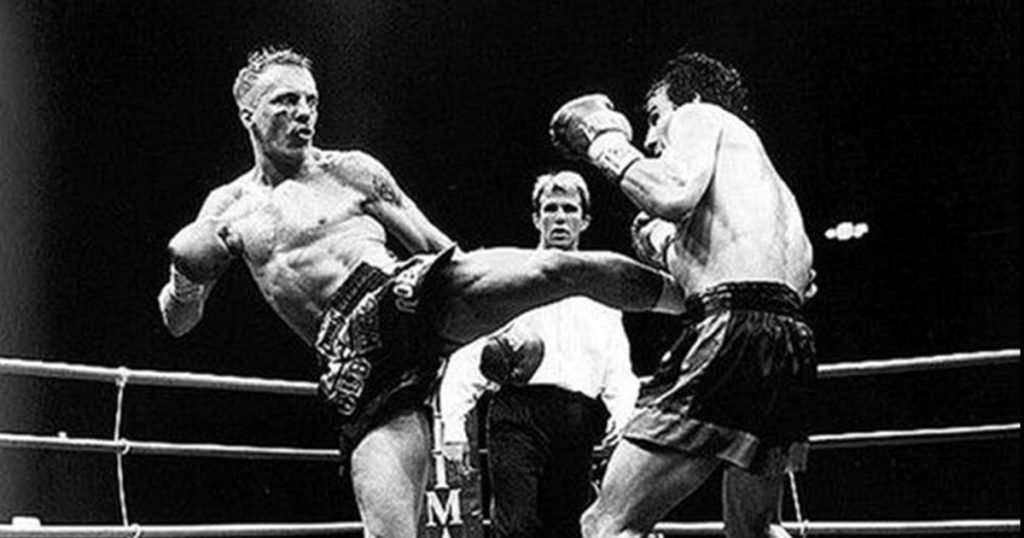
Ramon Dekkers’ style mainly consisted of punching, with his left hook responsible for most of his finest knockout wins. He would also throw uppercuts into his combos, and the right leg kick usually followed his famous left hook. In the ring, his demeanor switched from calm to very aggressive very quickly, which took many of his opponents by surprise.
While his style allowed him to win by knockout, the downside of Ramon Dekkers’ style was that it was not suited to scoring high points under the Thai system. It was unlike the European scoring system the Dutchman was accustomed to. This resulted in him losing many of his matches by decision, and his Muay Thai record suffered a little. If he couldn’t knock out his opponent, he had a difficult time scoring against them. The Thai fans and judges weren’t really on his side either, at least in the early matches.
Many of the Thai fighters eventually brought in special trainers to help elevate their standards and started studying videos of Ramon Dekkers fighting before meeting him in the ring. When Hemmers visited some gyms in Thailand, he would see that they were using similar bag and pad combinations, attempting to imitate his training sessions with Dekkers. They were also trying out techniques such as more boxing and elbow strikes since the kicking and kneeing were not very effective against Dekkers. This could mean that Ramon Dekkers was, to some extent, indirectly responsible for upping the game and getting the Thai fighters to get out of their comfort zones to fight him.
A Golden Era Rivalry With ‘The Cruncher’
Out of the many high-profile fights of Ramon Dekkers’ Muay Thai career, the ones against two-time Lumpinee champion Coban Lookchaomaesaitong were the most memorable. In Paris, Coban fought Ramon Dekkers for the first time. Dekkers, who was very proficient at using the left hook to dispatch his opponents, was surprisingly knocked out using the same move by Coban. It would remain one of the few instances where Dekkers would lose by knockout.
Their second meeting was in Bangkok a few months later, at Coban’s home turf, the Lumpinee stadium. In the rematch, Dekkers would return the favor, knocking out Coban with a right cross in the first round. This would mark an important point in Muay Thai history, as a foreign fighter had defeated a Lumpinee champion in their own arena.
The rivalry would continue to grow over the next two years, with Dekkers and Coban meeting twice. Unlike their first two encounters, which ended in knockouts, the third match carried on till the fifth round, with Coban winning by decision. Dekkers won the fourth and final match by decision, tying the score between them. While there was no fifth match to decide who was better, these Muay Thai fights between Dekkers and Coban are still considered by many fans to be some of the best to take place in the Golden Era.
Recognition In Thailand
While Ramon Dekkers wasn’t always popular in Thailand, his fighting spirit in the face of many of the best local fighters ultimately won the hearts of Muay Thai fans in the country. Knocking out some of their Lumpinee champions surely played a big role in winning their respect. He continued fighting in Thailand and on the world stage, winning a total of eight world championship titles by the time he retired. Dekkers’ fighting record was impressive to say the least, winning 186 out of 224 matches, with 95 of them being by knockout.
Ramon Dekkers’ contribution to Muay Thai would be recognized by the Thai royal family as well, who presented him with a special award in 2013 on the 85th birthday of the King of Thailand. At this event, he was made an ambassador for all foreign fighters in Thailand.
Ramon Dekkers’ Legacy
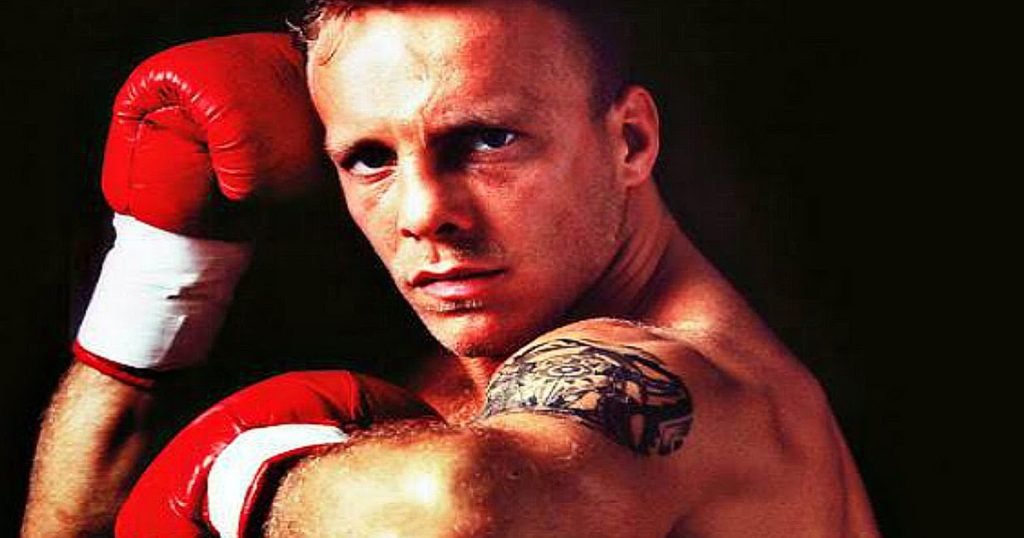
Ramon Dekkers retired in 2001 after a farewell match against Marino Deflorin, which took place in the Netherlands. He would make a brief comeback as a K-1 mixed martial arts fighter, although that was short-lived. He remained as a martial arts trainer on two teams, Team Dekkers and Golden Glory, as well as promoting Muay Thai around the world until Dekkers died tragically of a heart attack in 2013. He was only 43 years old at the time.
Ramon Dekkers remains one of the few foreign fighters to have gained a massive following in Thailand. He would be instrumental in not only popularizing the martial art at an international level but also opening the doors for foreign fighters to compete in Thailand. His fights would become legendary and are still remembered as some of the most exciting in the Golden Era. Not only was Ramon Dekkers a true Muay Thai legend, he also managed to show the Thai fighters a thing or two about their own national sport.
FAQs
Wondering how much Muay Thai training in Thailand will cost? Prices range from only $10-$23 per session, a mere $64-$96 per week, and an extremely reasonable $222-$318 each month. It’s time to take your martial arts dreams to the next level!
No one is too old for Muay Thai! If you are physically capable, then there’s nothing stopping you from reaping the rewards of training this legendary martial art. It doesn’t matter if you’re in your 40s, 50s, or even 60s; people all over the world are still learning and honing their skills in Muay Thai every day.

